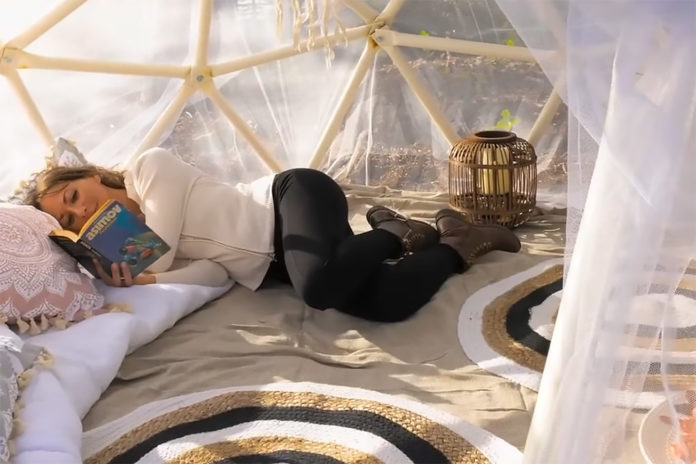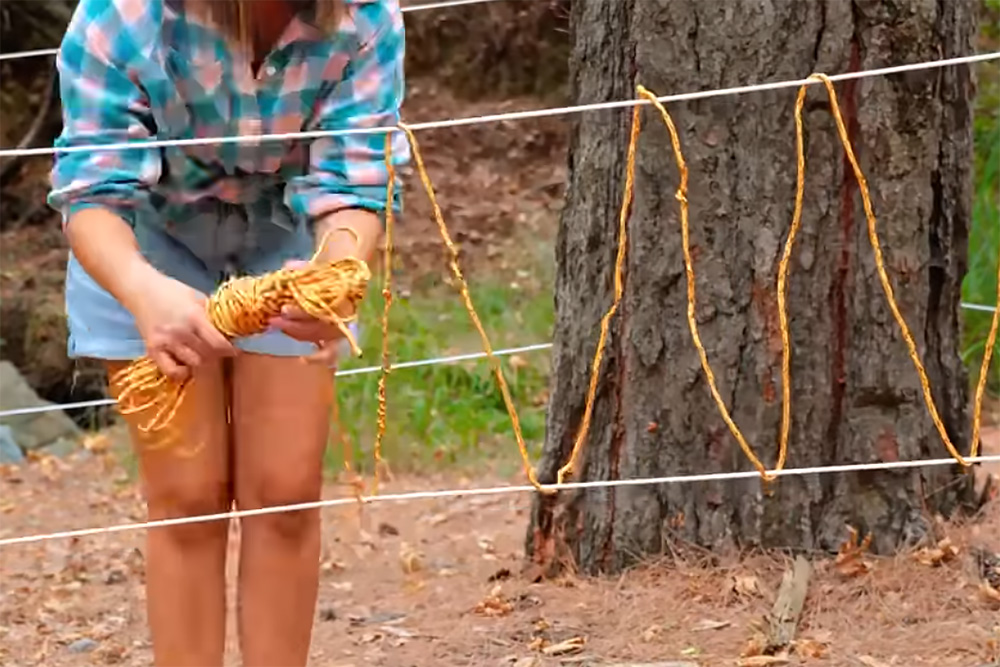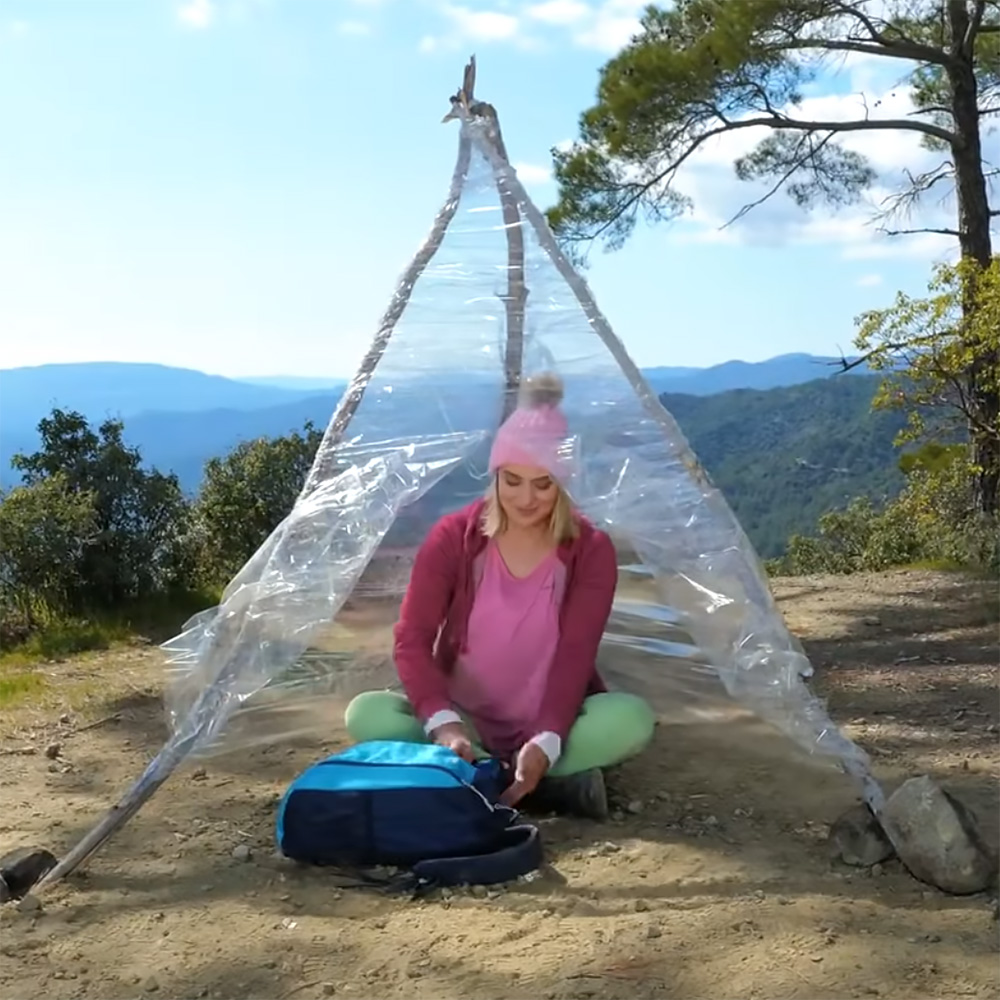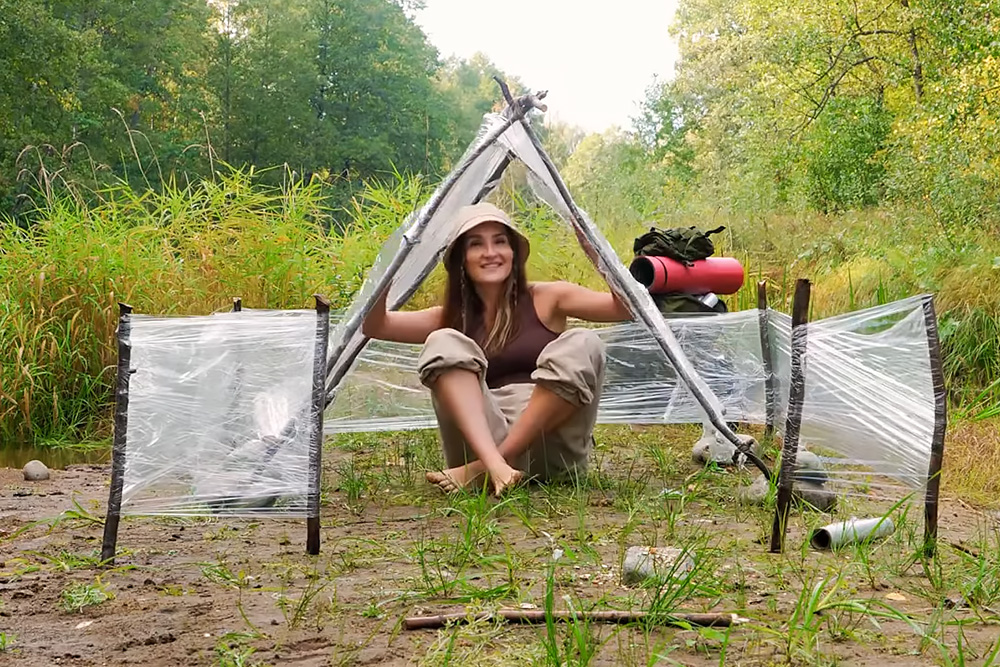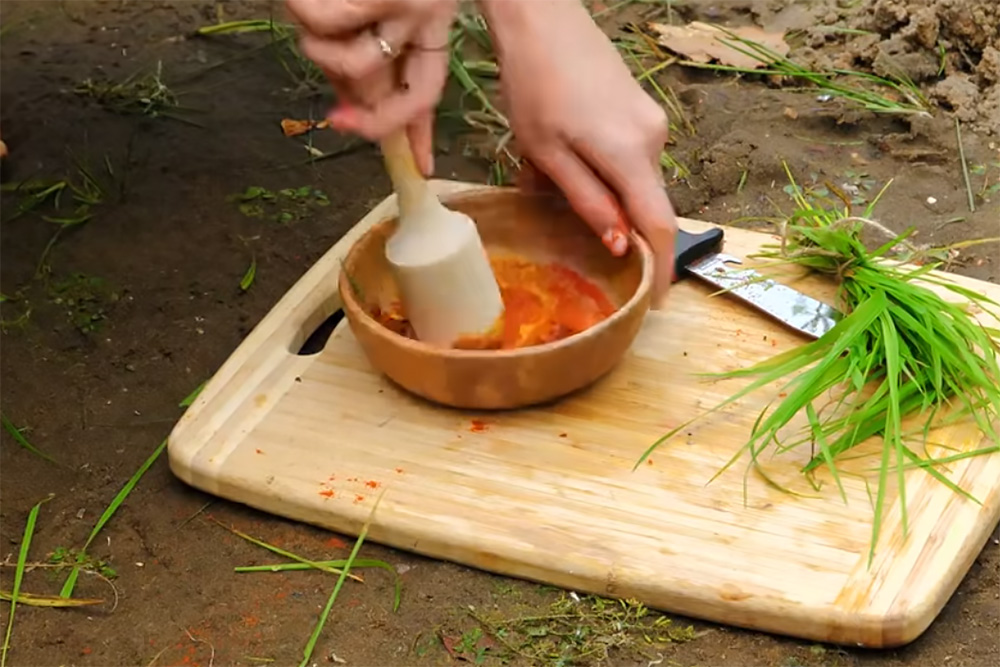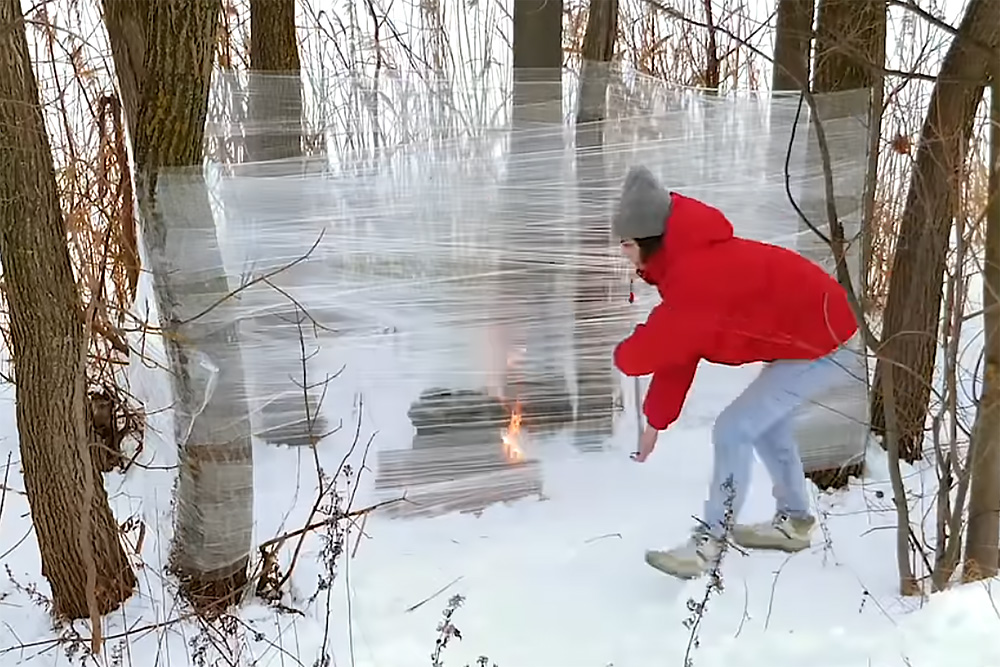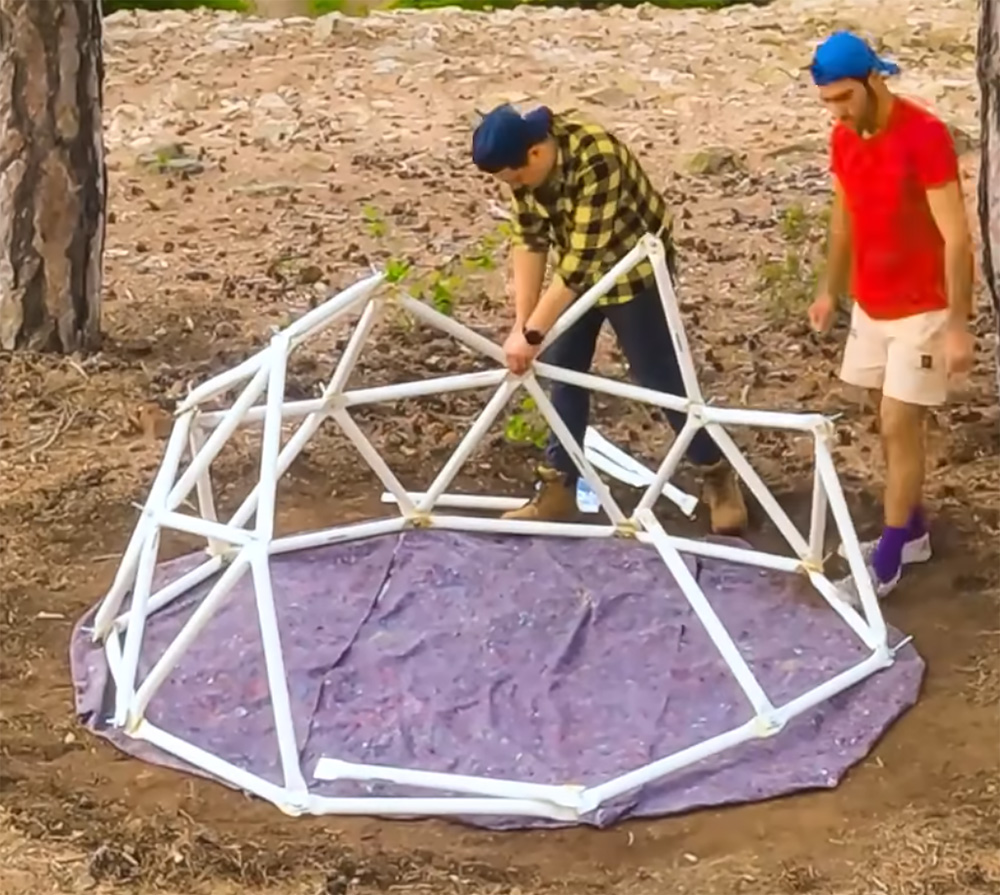Bushcraft is a term that was largely popularized by legendary Canadian outdoorsman Mors Kochanski, who summed up his survival philosophy with a memorable quote: “The more you know, the less you carry.” This emphasizes the importance of developing a well-rounded set of knowledge and skills that can help you survive in the wilderness. It also encourages the use of natural resources, rather than overreliance on manmade gear and tools. Unfortunately, the term bushcraft is often misused to refer to any outdoorsy DIY “life hack,” most of which are actually the exact opposite of what bushcraft should be. The following viral video from the Facebook page 5-Minute Crafts Men claims to contain “serious bushcraft ideas” that can help you “survive in any conditions,” but it actually feels like a 15-minute compilation of some of the internet’s dumbest survival tips.
Above: If you think this is what survival looks like, please save the search-and-rescue teams some trouble and don’t venture off the beaten path.
The Original Survival Tips Video
You can watch the full 15-minute “serious bushcraft ideas” video in the embedded video player below, or by clicking this link.
There’s a lot to take in here, so read on as we evaluate some of the most impractical survival tips seen in this video.
Survival Tip #1: “Protected from Wild Animals”
The very first segment in this compilation sets a low bar for the remainder of the survival tips. We’d love to know which wild animals this woman is seeking protection from, because a waist-high string net isn’t going to be stopping any of them. Small critters like field mice and racoons will pass right under it. Larger animals like bears will be completely unfazed by it, assuming something inside the campsite caught their attention in the first place (they’re smart enough to open car doors). The only thing this tip might be useful for is improvising an emergency beach volleyball net.
It’s almost as bad as another piece of infamous internet survival advice, the WikiHow entry for “How to Escape Dangerous Forest Animals.”
If you want to avoid creepy-crawlies at ground level, consider building an elevated sleeping platform or set up a hammock. As for bears and larger animals, keep all food and other scented items away from your camp, ideally in an elevated bear bag. Refer to this article from the Alaska Department of Fish and Game for more info.
Survival Tip #2: Pitiful Plastic Tipis
We hope you’re stocked up on plastic wrap, because it seems to be the video creators’ favorite material. Would it be useful if you found a roll in a dumpster or washed up on a beach? Sure. Is it an essential material you should carry in your backpack specifically for shelter-building? No way. Here’s a better survival tip: bring a tarp. They’re lighter, more compact, easier to work with, opaque, and they’re even reusable! What a concept. Ironically, the very next clip shows a rudimentary tarp setup on a ridgeline, so we know they had access to one.
On top of that, this tipi design is barely big enough to huddle inside in the fetal position. Spend a night like that in the forest, and you certainly won’t be smiling as much as this lady. Instead, use your handy-dandy tarp to make a shelter, or use real bushcraft skills to construct one from naturally-occurring materials.
Later in the video, another clip shows how to make a tipi out of rolls of clear packing tape, which manages to be even more inefficient than the plastic wrap method. As Ron Burgundy would say, we’re not even mad — that’s amazing.
Survival Tip #3: Did We Mention the Plastic Wrap?
This clip gave us a glimmer of hope at first — it starts with a rudimentary wood A-frame that’s at least long enough to sleep inside. But then our hopes were dashed as the plastic wrap returned. Yes, applying enough of it can create a water-resistant barrier over the shelter, but so would a tarp… or a few layers of the nearby grass and evergreen boughs. We won’t even bother discussing the goofy, pointless plastic wrap fence around the shelter.
Additionally, this shelter is built on a tiny sand bar that’s surrounded by water, and it’s raining. Does she want her shelter to get flooded? Because it sure seems like the perfect location for that.
Survival Tip #4: Bring the Entire Kitchen!
The video would lead us to believe that this woman’s backpack contains:
- A whole raw chicken
- One eggplant
- One bell pepper
- A full-size cutting board
- A wood mortar and pestle
- Aluminum foil
- Multiple jars of spices
- A grocery store bottle of olive oil
At this point, she might as well just bring a portable barbecue grill and basting brush rather than making them out of twigs and dirty grass from the riverbank. The latter item is a great way to smear waterborne pathogens all over the food. She also apparently forgot to pack a fork, since she’s seen stabbing her food with a camp knife to eat it. Next morning, she splashes dirty river water in her face before cutting the plastic wrap off her shelter and traipsing off through the creek.
For an overview of the numerous alternative cooking methods that could’ve been used here, check out our previous article Grid-Down Chef: 6 Outdoor Cooking Methods.
Survival Tip #5: Give Yourself Hypothermia
More plastic wrap. This time, it’s used to enclose a DIY fire pit made from an old car wheel and some fire bricks — we assume she stopped by a junkyard and Home Depot on the way to bushcraft practice. She surrounds the fire on all sides, makes sure to seal the bottom edge with snow, and then cuts a large entry flap that’s seen blowing in the breeze. After setting up a wall thermometer (also from Home Depot, no doubt) she dons a bikini and jumps into the icy water nearby, then returns to the plastic sauna to attempt to warm back up. How refreshing!
Seriously though, if you’re in a cold-weather survival situation, we shouldn’t have to explain why it’d be stupid to wear a bikini or jump into an icy lake. And if you have enough time to build a sauna, you should probably pick a different recreational activity that doesn’t put you in immediate danger of hypothermia and frostbite (maybe even carbon monoxide poisoning). Or just build one out of wood like a normal person.
Survival Tip #6: Make a PVC Geodesic Dome
The final segment is truly incredible.
You’ll need a few friends to help you create this expert-level survival shelter. Make a clearing in the woods, lay down some blankets, and remove a few dozen segments of PVC pipe from your backpack. Then take the propane torch and C-clamp you also carry in your backpack, and flatten the ends of each pipe. Next, for some reason, use a pair of scissors to bore bolt holes through each pipe (your cordless power drill must be out of batteries). Use bolts and wingnuts to assemble the PVC pipes into a geodesic dome — everybody knows that’s the most efficient survival shelter shape.
Cover the shelter in transparent mesh so it won’t block the breeze, and decorate it with placemats, throw pillows, scented candles, and cute dreamcatchers. It’s the perfect place to relax and read Isaac Asimov novels until someone can come rescue you. Pair this with a zigzagged string animal barrier for extra safety.
Closing Thoughts
Even a broken clock is right twice a day, and this insane video still includes a few tips that might be marginally useful. The hammock clip shows how to add toggles to tie down a tarp. The igloo clip builds about 20% of a functional snow shelter, but it does contain a few smaller tips with some validity:
- Using a pencil sharpener to quickly generate tinder shavings
- Using crumpled paper as extra insulation between clothing layers (a practice often used by homeless people in cold climates)
- Making pine needle tea
At the time of publication, this video has 928,000 views. We sincerely hope that, like us, most of those viewers were only watching to point and laugh.
The post Reviewing the Internet’s Dumbest Survival Tips appeared first on RECOIL OFFGRID.


